Table of Contents
Are Cat Teeth Good for Chewing?
You may have noticed that when your cat is trying to “chew” some food, what they are really doing is open mouth chomping, up and down, up and down. Sometimes with a bit of head action to boot.
The reason for this is that a cat’s teeth are designed for ripping and tearing, but not for chewing.
What Kind of Teeth Do Cats Have?
Here is a diagram of an adult cat’s teeth:
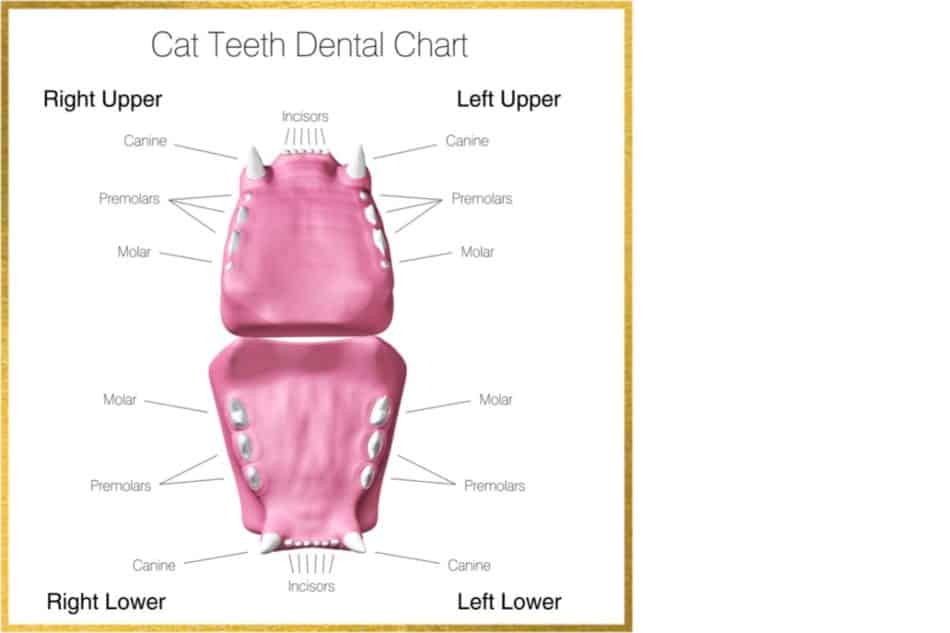
INCISORS
These are the small teeth located right up-front. I imagine these teeth are used mostly for picking up stuff and snatching the occasional flea they might find when they are grooming.
CANINES (fangs)
Canines are the four prominent front teeth, which are sometimes referred to as fangs.
These teeth are for grabbing and stabbing prey, and for tearing away meat.
Canine teeth can be pretty scary looking. Look at these fearsome canine teeth:

Our domestic cat has a close cousin who has some pretty impressive canine teeth:

Lost to extinction about 10,000 years ago, the saber-toothed cat had spectacular canine teeth:

PREMOLARS and MOLARS
Behind the canine teeth there are the premolars and the molars.
When we humans want to chew something like a walnut or a leaf of spinach, we might move the food to our premolars and molars and chew away. Human molars are pretty much square-shaped on top with uneven but somewhat blunt surfaces. These teeth are great for chewing.
The problem with cats chewing with their premolars and molars is that on cats those teeth are pointed. This is great for ripping and tearing meat, but not so great for crunching up something like dry cat food.
Imagine if you had a bowl of dry cat food, often referred to as kibble, and say you wanted to mash it all up. You would find something with a flat surface, even if that surface was rounded like a with a spoon. If you could press hard enough you could probably crunch the kibble.
Now imagine you tried to mash the kibble using the pointed end of a fork. I think you might find it difficult trying the crunch the kibble that way. You would probably just stab away at it, sort of the way cats might chomp away at it.
The reason cats have these pointed teeth that are optimized for eating meat is because they’re carnivores. In fact, they are what is known as hypercarnivores. They must have a primarily meat diet.
Can Cats Chew Kibble?
Cats do seem to have a hard time trying pulverize kibble, so those kibble pellets may simply get swallowed. In fact, they often do get swallowed without chewing.
You ought to avoid feeding your kitties kibble with large pellets. You don’t want those pellets to get stuck in your cat’s throat. Some dog kibble products apparently have larger pellets, so take care.
You should also not feed kibble to a kitten whose throat may not be wide enough to swallow a pellet.
With all this talk about dry cat food, this might be a good place to remind everyone that cats do need to stay hydrated. Cats on a primarily kibble diet will not get much water from their food, so drinking water becomes very important. My blog post How to Choose a Cat Water Fountain will give you tips on how to encourage your kitty to drink more water.
Can My Cat Chew Shredded Meat?
Cat teeth are designed for shredding meat, and cats shred their meat in the wild, so shredded meat would seem to be an appropriate food to give your cat. It is available in the marketplace.
We had multiple cats and I bought cat food by the case. One time I bought a case of a canned cat food that consisted mostly of shredded chicken.
Our cats loved that food. I must say, it turned into a feeding frenzy with jaws chomping and heads bobbing. It was really something to see. Some of the shreds ended up on the floor what with the high level of activity involved in eating that food.
They couldn’t just lick it into their mouths, they couldn’t chew on it, so they chomped on it.
Here is that shredded chicken food:
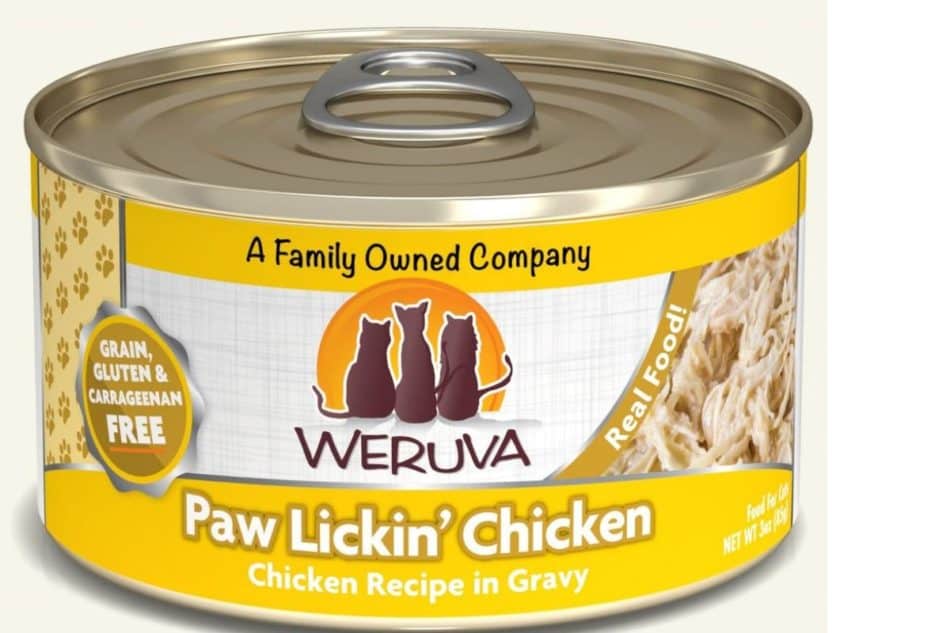
Paw Lickin’ Chicken is from the Weruva pet food company
If you prefer a calmer and more refined “cat dining” experience, consider this softer pate’:
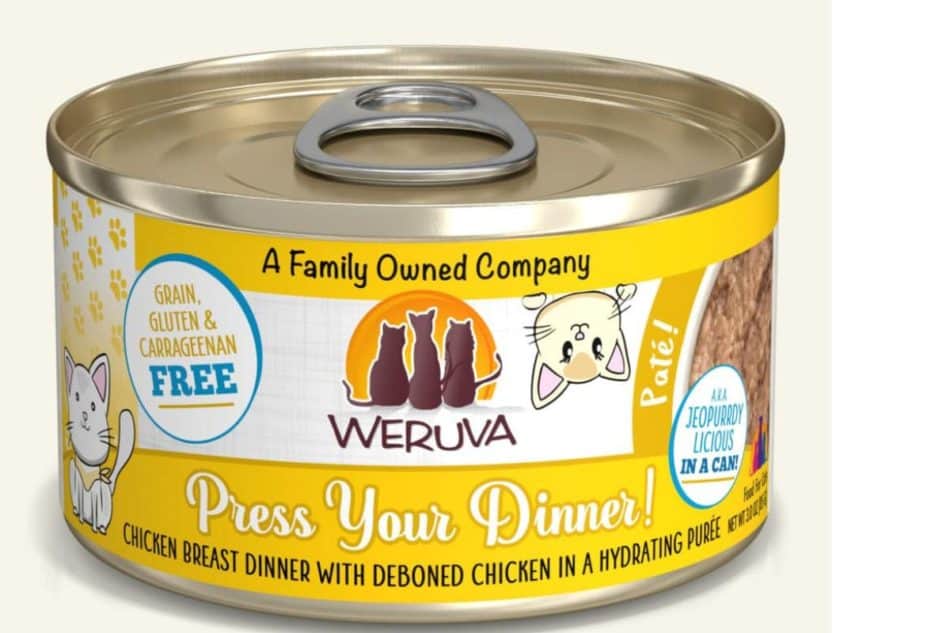
Press Your Dinner is from the Weruva pet food company
Both of the cat foods shown above have an excellent ingredient list. If you would like to know how to be sure you are providing your kitty with a healthy diet, my blog post Why Are Cats Picky Eaters? will show you how to evaluate the ingredients in cat food.
Do Cats Use Their Tongue to Eat?
Cats will sometimes intake food using their tongue. They may use their tongue to lick and lap up a wet food, or perhaps scoop some of the chunks in the wet food.
They may even grab the pellets of dry food with their tongue. Here is a kitty about to do just that:
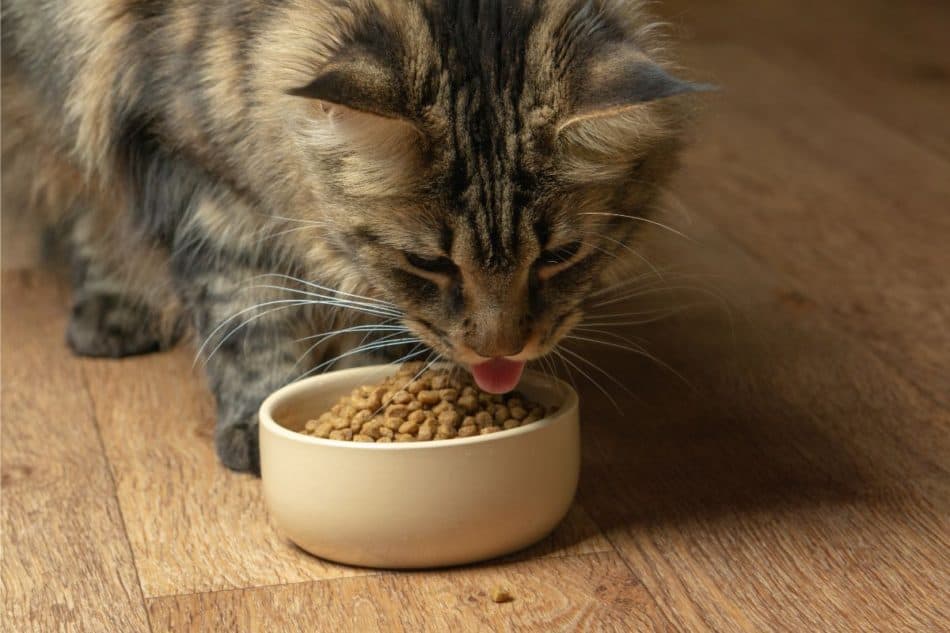
Something else that will make eating more of a pleasure for your kitties is having the right kind of bowls for them to eat from. My blog post How to Choose Cat Bowls will help you with that.
How Can I Tell If My Cat Likes Their Food?
If a cat who is well fed every day eats a particular food you have served, you can be assured the cat likes that food enough to accept it. Cats are not hesitant to refuse something they do not like. They really do know how to say no.
Additionally, there was actually a study published in The Veterinary Journal that found that cats often licked their lips in response to food they liked.
I found this really interesting because before knowing about this study, we always assumed that when a cat finished eating and then looked at us and licked their lips, they were telling us “thank you, I liked that very much”. Sort of like this kitty is doing:
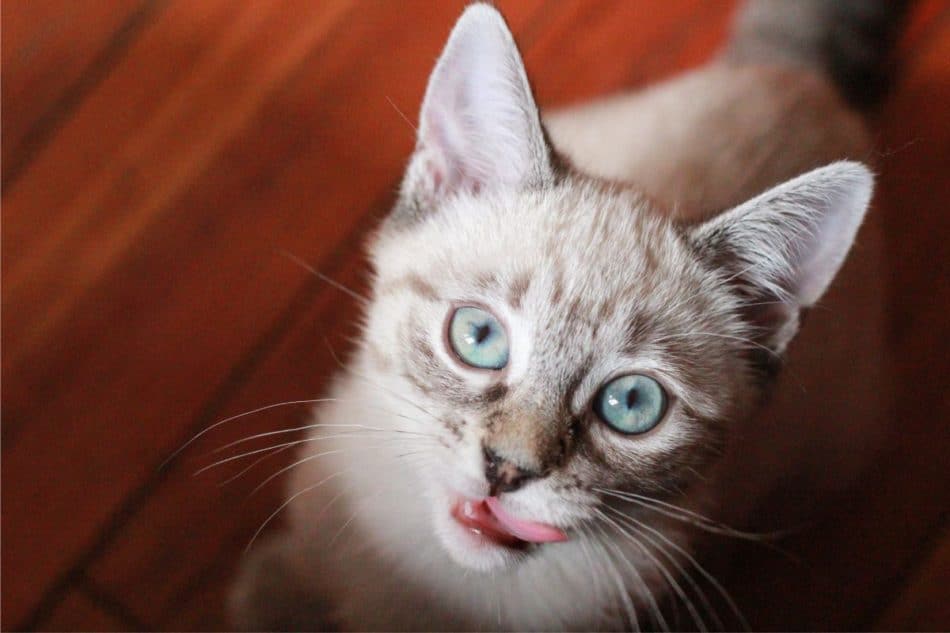
For more on how cats communicate their feelings to you, visit my blog post Cat Body Language
For More Information
Visit my blog post Learn About Cats to gain more knowledge about that incredible animal you live with. There is so much to know about these amazing cats.
